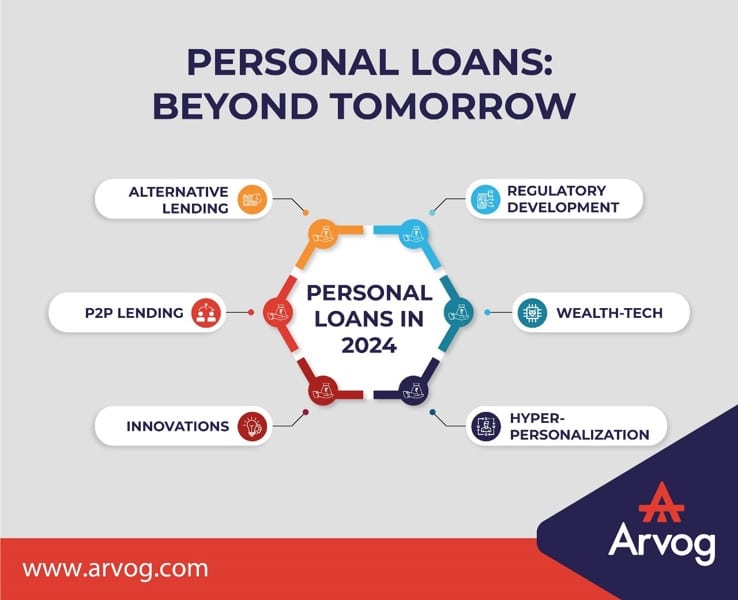
Introduction
Personal loans have been a significant financial tool for individuals in India, witnessing a 22% YoY growth. Despite this surge, the average loan ticket size has been on a declining trajectory since 2019. This shift is influenced by various factors, including increased risk weights, making personal loans both more expensive and more challenging to acquire.
As we learn more about this competitive sector, it becomes clear that numerous aspects affect the future of loans and borrowing. The trends observed reflect a blend of challenges and opportunities, shaping the financial journey for individuals across the country.
This article will discuss each of these personal loan trends in 2024 in detail.
Trends Shaping Personal Loans in 2024
As more people know how to get a personal loan easily and the middle-class population grows, many choose these loans to cover their personal and business expenses. Let’s take a closer look at how these ongoing trends shape the world of personal loans in India.
Regulatory Development
This year, getting personal loans might cost more because of changes in rules by the Reserve Bank of India (RBI). The RBI has increased the risk weight on consumer credit from 100% to 125% in response to a rise in unsecured loans. All regulated companies need to follow these new rules by February 29, 2024, which will make lending without collateral more expensive.
Wealth-tech and hyper-personalisation
In 2022, despite global economic concerns, private wealth in India increased. The number of high-net-worth individuals (HNIs) is expected to grow from 3.5 lakh in 2020 to 6.2 lakh in 2025. This growth leads to significant changes in managing wealth. A new trend called hyper-personalisation is emerging in wealth management.
Unlike personalization, which tailors advice based on groups, hyper-personalization goes a step further, offering each individual a unique and engaging experience.
- Customized portfolio standards and thresholds can be set with improved tracking and AI tools.
- Customers now seek personalized financial advice, digital engagement, and solutions tailored to their needs.
The Rise of Alternative Lending
In the past, banks mainly provided loans for things like homes, cars, and personal expenses. But now, they are paying more attention to different ways people can use credit, like credit cards, buy now, pay later (BNPL), and credit EMIs. New financial technology companies, known as FinTech, are revolutionizing the market by offering consumers fresh and creative products like online personal loans.
Peer-to-peer lending promoting gender equality
Now, more P2P platforms focus on helping women by providing specialized services. This is seen as a positive change for gender equality in countries like India. It makes sense for business returns and benefits women borrowers, who are often more disciplined with better credit profiles, according to a report by TransUnion-CIBIL.
Additionally, more women are showing interest in supporting each other through this lending model, with a significant 430% increase in investments from women, making it a rapidly growing alternative investment option.
Innovations in Lending Technology
A significant shift to digital processes has occurred in financial institutions, changing how people see personal loans. Data science helps digital lenders transform, regulate, and analyze data to understand borrowers’ profiles, making loan offerings highly customizable.
Due to increased digitization, personal loans are widely used, prompting banks and non-banking financial companies (NBFCs) to embrace more automation and reduce paperwork.
Now, you only need to submit a few easily countable documents, including address proof, ID proof, and bank statements, with many processes streamlined into an “AutoFill” mode.
Parting Thoughts
In India, where many people are still learning about digital tools, combining digital and traditional methods might work better for the best personal loans in the long run. Even though going fully digital seems good for business, it’s important to be flexible. The changes in the lending industry, with more competition and better technology, mean both borrowers and lenders must quickly adapt.
Who we are
Arvog is a new-age, AI/ML-powered, customer-centric finance company that makes digital lending quick, efficient, and easy. We focus on digital personal loans and digital gold loans.




